The Catalyst Killing - [21]
I viewed Martin Morgenstierne in a more positive light following this conversation. It now seemed that he had said all that he wanted to for today. He looked at me questioningly over his glass of cognac, with a hint of anticipation.
I still had one unanswered question – which I really did not want to ask, but knew I had to.
‘As a matter of procedure, I have to ask where you were at ten o’clock yesterday evening?’
I was prepared for a violent reaction. There was none. Martin Morgenstierne was obviously an impressively controlled man. He emptied what was left of his cognac before answering, but when he did, his voice was measured but not unfriendly.
‘I have been a law-abiding man all my life. And I had not given up hope that my daughter would at some point change her views, and that we would be reconciled. In fact, it was my fervent wish for the future. The thought that I might hurt my daughter in any way is absurd. But I fully understand that you have to ask. Fortunately, I can tell you that I was at a colleague’s fiftieth birthday celebrations yesterday evening at ten o’clock, and that can be confirmed by about ten reliable witnesses.’
When he said the word ‘absurd’ it struck me that Martin Morgenstierne the bank manager and Miriam Filtvedt Bentsen the SPP activist, despite all other apparent differences, shared a remarkable sense of rationality. But even though Morgenstierne had risen in my esteem during our conversation, I was in no doubt which of the two I liked best.
I had no more questions to ask then and there. I thanked him for his time and once more gave my condolences, then stood up. Martin Morgenstierne was a very proper host, and he followed me out to the front door.
In the hallway, he said that he would be grateful if he could be informed of any conclusions the investigation might reach concerning his daughter’s murder before they appeared in the newspapers. Then he added that he was more than happy to answer any more questions, should that be necessary, but did not think that he had much more to add. He had no idea what his daughter had been up to in the past year. He would guess that the possible motive was to be found in the radical circles she frequented, some of whose members were not averse to the idea of terrorism and illegal activity. But he did not know any of the others involved, and so could not point anyone out as a suspect.
As I was leaving, he suddenly remarked that it would no doubt be some time before his daughter could be buried due to the ongoing investigation, but that when the time came he supposed it would be he who had to do it. I confirmed this assumption: Marie Morgenstierne had at the time of her death been unmarried, and her father was her closest relative. He said he would have to consider the situation, but thought that perhaps she should be buried beside her mother in the family grave.
I pointed out that that had nothing to do with me or the police, but that personally I thought it was a good idea. And in some way in that moment, it felt as though Marie Morgenstierne was one step closer to reconciliation with her parents, albeit after her own and her mother’s death. Her father and I shook hands and parted on almost friendly terms.
When I left the house in Frogner at ten past seven, I had still only seen Martin Morgenstierne’s smile on old photographs. But little else was to be expected, given what I now knew about the family history. And given the father’s alibis it seemed very unlikely that he had anything to do with his daughter’s death, or with her fiancé’s disappearance.
XVI
I had plenty of new information to worry about on my short drive to the grand Borchmann residence at 104 -8 Erling Skjalgsson’s Street. The case was becoming increasingly complex, and a solution was no closer than it had been this morning. However, as I parked the car, it was the thought of how it would be to see Patricia again that bothered me most. My last visit there had been some fifteen months earlier, on the Norwegian national day, and that 17 May had ended dramatically when I more or less fled the house just before midnight.
To my relief, the impressive white building was just as I remembered. To step through the door was still like taking a step back in time to the 1930s. It was Patricia’s father, the professor and company director Ragnar Sverre Borchmann, who had contacted me in connection with my first murder investigation two years ago. This time, he was nowhere to be seen. But I was still graciously received. I was, just as before, unable to tell whether the maid was Beate or Benedikte, as they were identical twins. But I assumed that Benedikte would not be back at work yet as she had had a baby the year before, so I guessed it was Beate, and did not ask. She was standing at the ready as soon as I rang the doorbell, and whispered: ‘Don’t say that I told you, but she’s been looking forward to this and waiting impatiently for you all day.’
I gave her a friendly smile and took this as a sign that our complicity from the two previous investigations had been re-established.
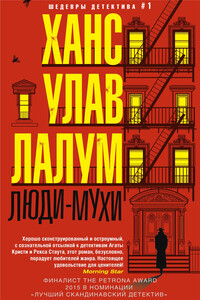
Убит бывший лидер норвежского Сопротивления и бывший член кабинета министров Харальд Олесен. Его тело обнаружено в запертой квартире, следов взлома нет, орудие убийства отсутствует. На звук выстрела к двери Олесена сбежались все соседи, но никого не увидели. Инспектор уголовного розыска Колбьёрн Кристиансен считает, что убийство, скорее всего, совершил кто-то из них. Более того, он полагает, что их показания лживы.
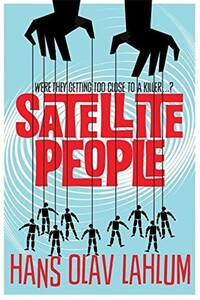
A gripping, evocative, and ingenious mystery which pays homage to Agatha Christie, Satellite People is the second Norwegian mystery in Hans Olav Lahlum's series. Oslo, 1969: When a wealthy man collapses and dies during a dinner party, Norwegian Police Inspector Kolbjorn Kristiansen, known as K2, is left shaken. For the victim, Magdalon Schelderup, a multimillionaire businessman and former resistance fighter, had contacted him only the day before, fearing for his life. It soon becomes clear that every one of Schelderup's 10 dinner guests is a suspect in the case.
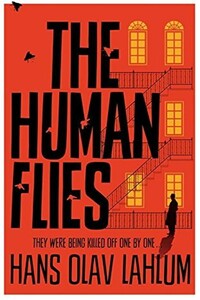
Oslo, 1968: ambitious young detective Inspector Kolbjorn Kristiansen is called to an apartment block, where a man has been found murdered. The victim, Harald Olesen, was a legendary hero of the Resistance during the Nazi occupation, and at first it is difficult to imagine who could have wanted him dead. But as Detective Inspector Kolbjorn Kristiansen (known as K2) begins to investigate, it seems clear that the murderer could only be one of Olesen's fellow tenants in the building. Soon, with the help of Patricia – a brilliant young woman confined to a wheelchair following a terrible accident – K2 will begin to untangle the web of lies surrounding Olesen's neighbors; each of whom, it seems, had their own reasons for wanting Olesen dead.
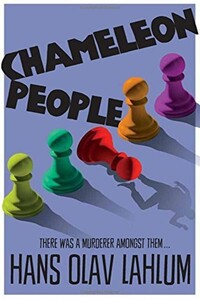
From the international bestselling author, Hans Olav Lahlum, comes Chameleon People, the fourth murder mystery in the K2 and Patricia series.1972. On a cold March morning the weekend peace is broken when a frantic young cyclist rings on Inspector Kolbjorn 'K2' Kristiansen's doorbell, desperate to speak to the detective.Compelled to help, K2 lets the boy inside, only to discover that he is being pursued by K2's colleagues in the Oslo police. A bloody knife is quickly found in the young man's pocket: a knife that matches the stab wounds of a politician murdered just a few streets away.The evidence seems clear-cut, and the arrest couldn't be easier.
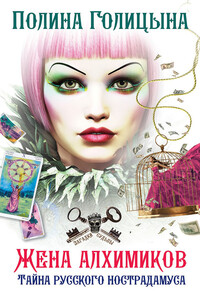
Странные, зловещие и не укладывающиеся в голову события происходят в современном мегаполисе. У таинственного бизнесмена неизвестные жестоко убивают жену, а затем кто-то похищает ее тело из могилы. В его жизни появляется красивая и загадочная женщина, чтобы помочь ему выполнить безумную миссию. Кто-то заказывает в ювелирной мастерской клетку из чистого золота высотой в человеческий рост, весом в 158 килограммов и стоимостью шестьсот миллионов рублей. Древний Орден красного льва, основанный самым знаменитым чернокнижником Российской империи Яковом Брюсом, которого называли "русским Нострадамусом" и "личным колдуном" Петра Великого, и о котором сложено много невероятных легенд, ведет охоту на человека, который способен изменить этот мир раз и навсегда.
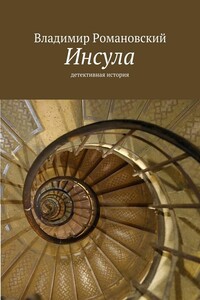
Детективная история, произошедшая в Санкт-Петербурге. Обычные люди в необычных обстоятельствах. Любовь, ненависть, жадность, драки и власть.
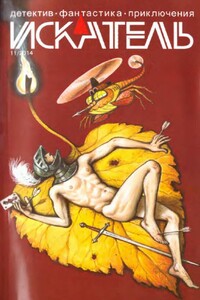
«ИСКАТЕЛЬ» — советский и российский литературный альманах. Издаётся с 1961 года. Публикует фантастические, приключенческие, детективные, военно-патриотические произведения, научно-популярные очерки и статьи. В 1961–1996 годах — литературное приложение к журналу «Вокруг света», с 1996 года — независимое издание.В 1961–1996 годах выходил шесть раз в год, в 1997–2002 годах — ежемесячно; с 2003 года выходит непериодически.Содержание:Анатолий Королев ПОЛИЦЕЙСКИЙ (повесть)Олег Быстров УКРАДИ МОЮ ЖИЗНЬ (окончание) (повесть)Владимир Лебедев ГОСТИ ИЗ НИОТКУДА.
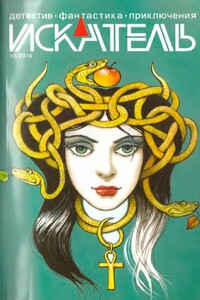
«ИСКАТЕЛЬ» — советский и российский литературный альманах. Издается с 1961 года. Публикует фантастические, приключенческие, детективные, военно-патриотические произведения, научно-популярные очерки и статьи. В 1961–1996 годах — литературное приложение к журналу «Вокруг света», с 1996 года — независимое издание.В 1961–1996 годах выходил шесть раз в год, в 1997–2002 годах — ежемесячно; с 2003 года выходит непериодически.Содержание:Олег Быстров УКРАДИ МОЮ ЖИЗНЬ (повесть);Петр Любестовский КЛЕТКА ДЛЯ НУТРИИ (повесть)
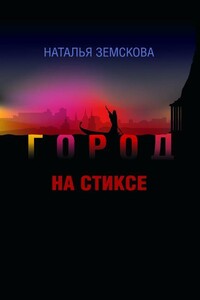
Наталья Земскова — журналист, театральный критик. В 2010 г. в издательстве «Астрель» (Санкт-Петербург) вышел её роман «Детородный возраст», который выдержал несколько переизданий. Остросюжетный роман «Город на Стиксе» — вторая книга писательницы. Молодая героиня, мечтает выйти замуж и уехать из забитого новостройками областного центра. Но вот у неё на глазах оживают тайны и легенды большого губернского города в центре России, судьбы талантливых людей, живущих рядом с нею. Роман «Город на Стиксе» — о выборе художника — провинция или столица? О том, чем рано или поздно приходится расплачиваться современному человеку, не верящему ни в Бога, ни в черта, а только в свой дар — за каждый неверный шаг.
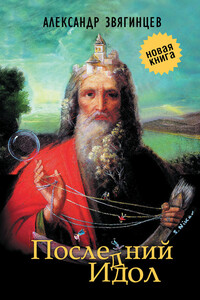
В сборник «Последний идол» вошли произведения Александра Звягинцева разных лет и разных жанров. Они объединены общей темой исторической памяти и личной ответственности человека в схватке со злом, которое порой предстает в самых неожиданных обличиях. Публикуются рассказы из циклов о делах следователей Багринцева и Северина, прокуроров Ольгина и Шип — уже известных читателям по сборнику Звягинцева «Кто-то из вас должен умереть!» (2012). Впервые увидит свет пьеса «Последний идол», а также цикл очерков писателя о событиях вокруг значительных фигур общественной и политической жизни России XIX–XX веков — от Петра Столыпина до Солженицына, от Александра Керенского до Льва Шейнина.